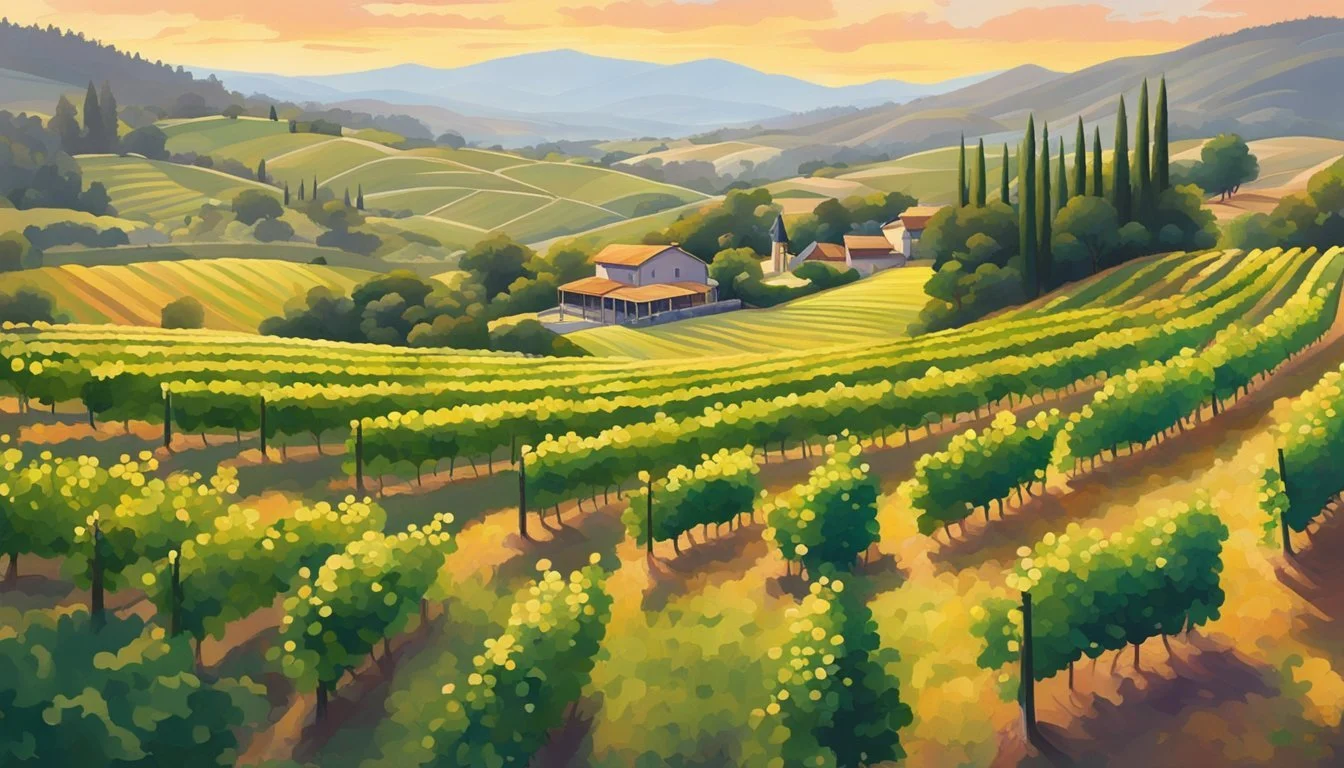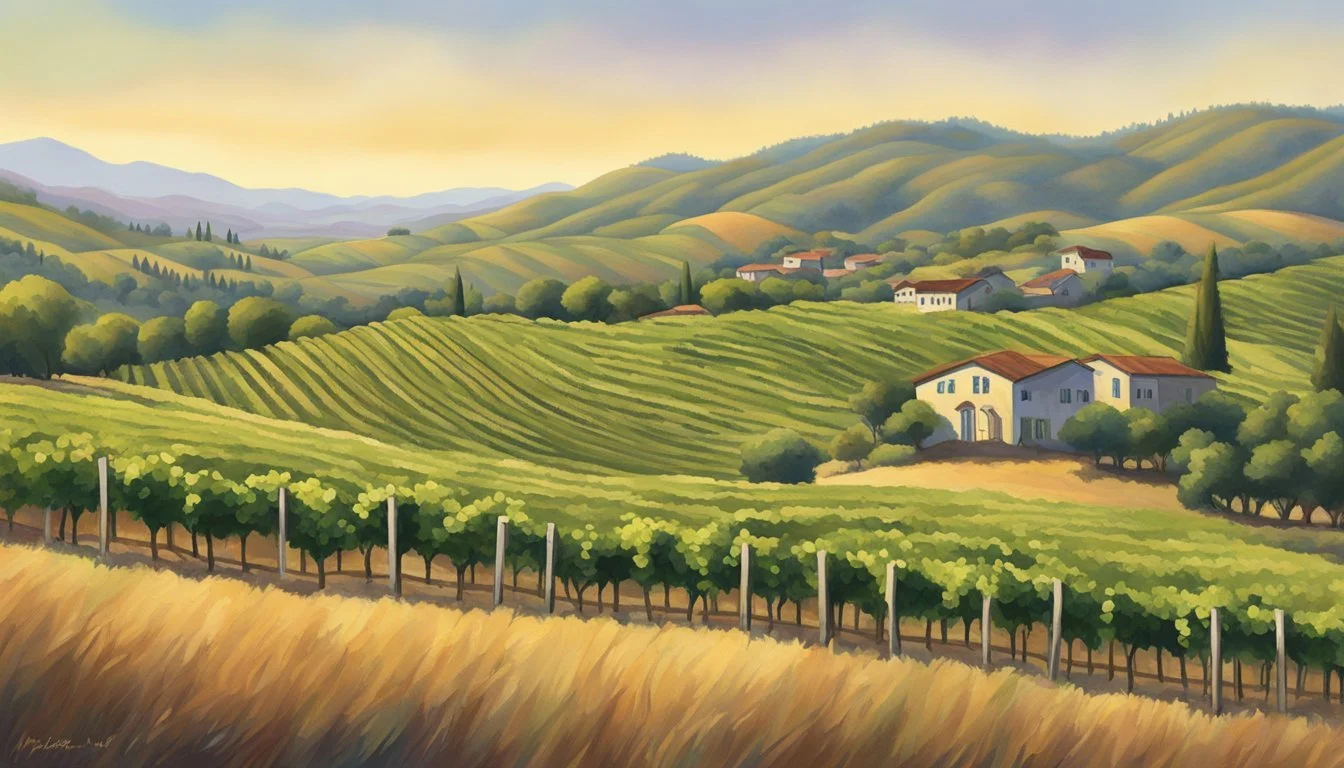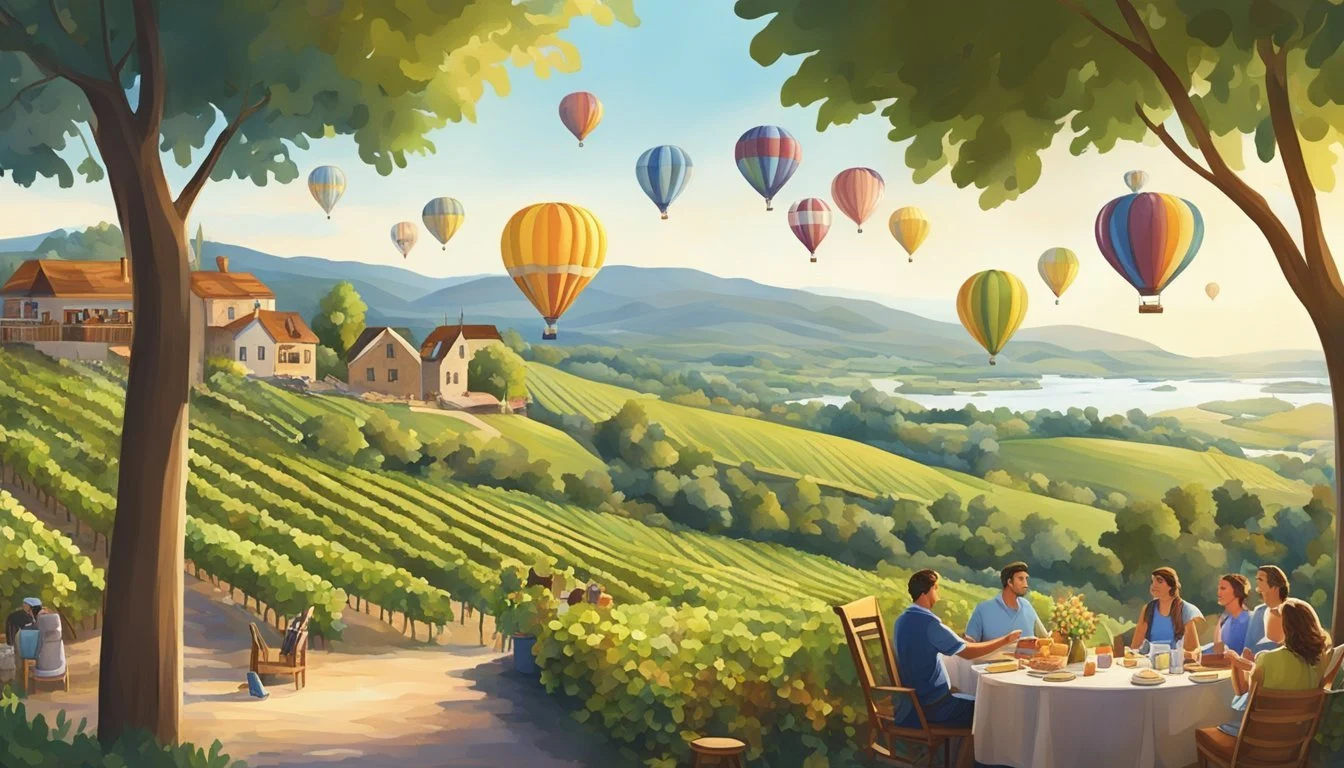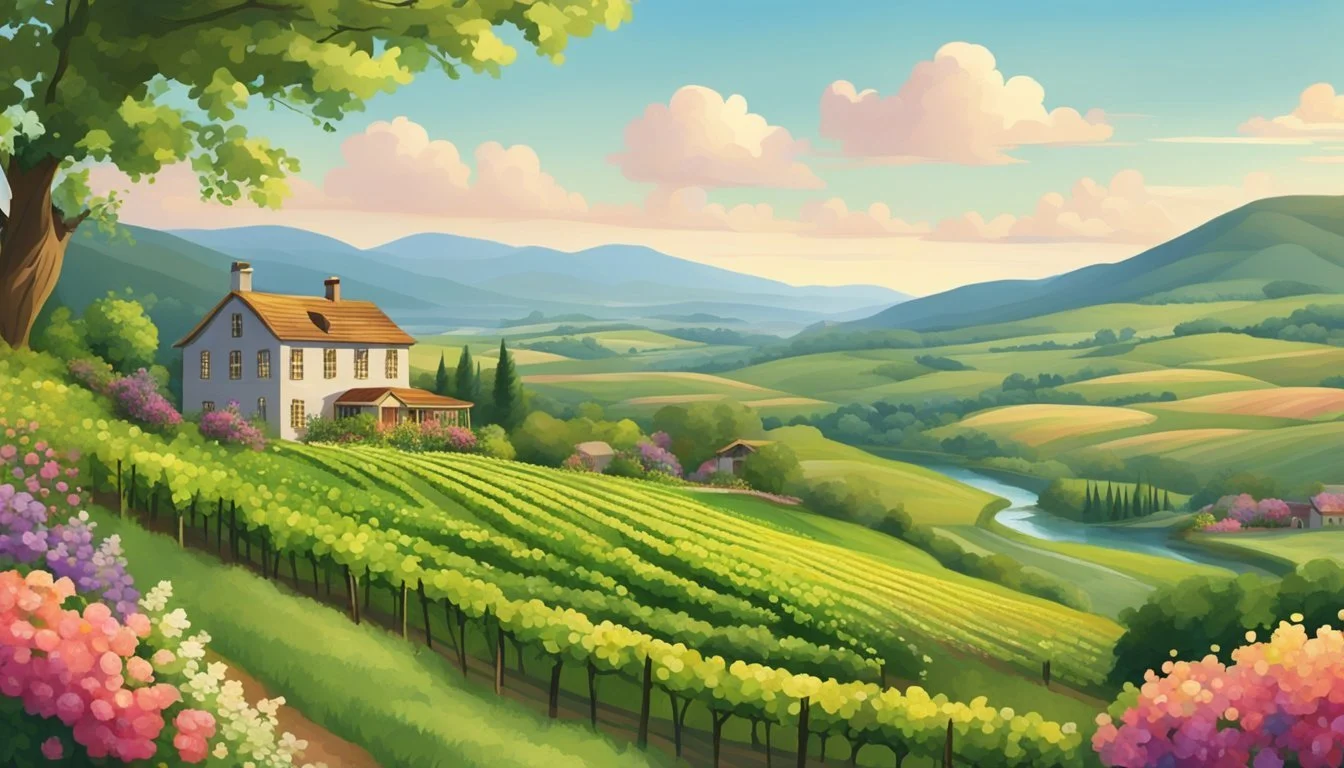Free Land in Wine Country
Exploring Napa and Nearby Areas
Dreaming of owning a piece of wine country? Napa Valley, renowned for its world-class vineyards and stunning landscapes, might just have opportunities that fit your vision. Immersing yourself in this picturesque region doesn't have to come with a hefty price tag if you know where to look. Remarkably, there are possibilities to acquire free land in and around Napa, giving aspiring vintners and nature lovers a chance to plant roots in this idyllic setting.
Exploring these opportunities can reveal hidden gems beyond the popular tourist spots. While many wineries in Napa Valley charge for tastings and experiences, some lesser-known areas and initiatives aim to attract newcomers by offering incentives like free land. Programs designed for community development or sustainable agriculture sometimes provide plots to those willing to cultivate the land responsibly.
Given Napa's historical commitment to conservation and modern sustainable practices, acquiring land here offers more than just a financial opportunity. It's a chance to be part of a legacy and lifestyle that values harmony between agriculture and the environment. Whether you're drawn by the allure of vineyards or the dream of a serene countryside home, understanding these opportunities can be the first step toward realizing your dream in one of the most celebrated wine regions in the world.
Exploring the Allure of Napa Valley
Napa Valley in California is celebrated not only for its world-famous wines like Cabernet Sauvignon and Chardonnay but also for its rich history, scenic landscapes, and vibrant cultural scene.
History of Napa's Wine Industry
Napa's wine industry has roots dating back to the 19th century. Early pioneers planted the first commercial vineyards in the 1860s. The industry faced setbacks during Prohibition, from 1920 to 1933, when many wineries closed.
Despite this, resilient vintners preserved the heritage and revived winemaking post-Prohibition. Establishments like the Robert Mondavi Winery, founded in 1966, significantly contributed to Napa's reputation. Merryvale Vineyards, established in 1983, reflects this enduring tradition, combining historical elements with modern practices to produce high-quality wines.
Napa Valley AVA and Wine Varietals
Napa Valley is an American Viticultural Area (AVA), a designated wine grape-growing region. It spans approximately 30 miles and includes diverse microclimates suitable for a variety of wine grape types.
Notable for producing exceptional Cabernet Sauvignon and Chardonnay, other varietals like Merlot and Sauvignon Blanc also thrive here. The region's AVA status ensures that wines labeled as Napa Valley adhere to strict quality standards, attracting wine enthusiasts from around the globe.
The Cultural Tapestry of Wine Country
The cultural landscape of Napa Valley extends beyond vineyards. Culinary arts thrive here, with institutions like the Culinary Institute of America offering world-class culinary education and experiences.
Scenic vineyards, music festivals, and art galleries add to the area's charm, creating a vibrant cultural tapestry. The Trefethen Family Vineyards is an example of integrating historical architecture with sustainable winemaking, reflecting the old-world charm and modern innovation characteristic of Napa Valley.
Together, these elements—history, viniculture, and rich cultural experiences—make Napa Valley a captivating destination.
Land Acquisition in Napa Valley
Acquiring land in Napa Valley, renowned for its vineyards and premium real estate, presents unique opportunities and challenges. This section explores the Napa real estate market, potential incentives, and key considerations for those interested in vineyard land.
Understanding the Real Estate Market
Napa Valley's real estate market is highly competitive and varies significantly by location. Property prices range from $300,000 to $1 million per acre, dependent on factors such as proximity to established vineyards and urban amenities. Areas like St. Helena and Calistoga are particularly sought after, driving up market values.
The market also includes opportunities for different property types, from vineyard land to residential plots. New entrants should be aware of existing demands and local real estate dynamics to make informed decisions.
Potential for Free Land and Incentives
Incentives for acquiring land in Napa Valley can come in various forms. For instance, some organizations might offer partial funding or grants to encourage sustainable farming practices. The Land Trust of Napa County works to protect land through conservation agreements, although this typically involves land remaining in private ownership rather than being offered for free.
While the concept of "free land" is rare in this premium region, exploring local incentives can sometimes reveal opportunities for reduced costs or collaborative projects that lower initial investment barriers.
Challenges and Considerations
Purchasing land in Napa poses several challenges. The high cost per acre necessitates substantial financial investment. Additionally, zoning laws and agricultural restrictions can limit property development and use. Buyers must navigate complex regulations designed to preserve Napa’s unique agricultural heritage and environmental sustainability.
Potential buyers should conduct thorough due diligence to understand water rights, soil conditions, and potential market risks. Engaging with local experts and real estate agents who specialize in vineyard properties can provide crucial insights and help mitigate risks associated with this significant investment.
By considering these factors, prospective buyers can better position themselves to take advantage of the unique opportunities that Napa Valley offers while being aware of the challenges this prestigious area presents.
Wine Production and Viticulture
Wine production in Napa Valley blends traditional farming techniques with contemporary sustainable practices. This section explores the different methods of cultivation, the commitment to organic and biodynamic practices, and the significance of Napa Green certification.
Methods of Cultivation
In Napa Valley, vineyards employ a variety of cultivation methods, each tailored to optimize grape quality and environmental sustainability. Conventional methods typically use synthetic pesticides and fertilizers.
By contrast, many Napa vineyards practice sustainable and environmentally-friendly farming techniques that prioritize soil health and ecosystem balance. Cover cropping and integrated pest management are commonly used strategies. These methods enhance biodiversity, improve soil structure, and reduce the need for chemical inputs.
Organic and Biodynamic Practices
Organic farming in Napa Valley eschews synthetic fertilizers, herbicides, and pesticides, adhering to USDA organic standards. Since 1989, some vineyards have embraced organic farming, improving soil and vine health.
Biodynamic farming goes a step further, treating the vineyard as a self-sustaining ecosystem. Practices involve astrological planting schedules, compost preparations, and biodiversity conservation. For instance, Quintessa vineyard has practiced biodynamic methods since 1996 and is Demeter Biodynamic certified, proving its commitment to natural cultivation.
Napa Green Certification
Napa Green Certification is a tiered environmental certification for vineyards and wineries dedicated to sustainable winemaking. There are two main certifications: Napa Green Land and Napa Green Winery.
Napa Green Land focuses on sustainable land management, emphasizing soil health, water conservation, and habitat preservation. Napa Green Winery certification assesses the winery’s operations, ensuring energy efficiency, water use reduction, and waste management practices.
Achieving Napa Green certification reflects a vineyard's dedication to enduring environmental stewardship, enhancing the long-term vitality of Napa Valley's wine industry.
Wineries and Tasting Rooms
Napa Valley features a host of renowned wineries and charming tasting rooms that provide visitors with rich wine experiences. These venues not only showcase exceptional wines but also create memorable and engaging visits.
The Charm of Local Wineries
Napa Valley's wineries often exhibit a blend of history, architecture, and scenery. Robert Mondavi Winery, established in 1966, exemplifies this charm with its mission-style design and bell tower. Smaller, family-operated wineries like Vincent Arroyo Winery in Calistoga offer a more intimate glimpse into the winemaking process. Such venues provide a personal touch, highlighting the diverse offerings in the region.
Tasting Room Experiences
Tasting rooms serve as the heart of the Napa wine experience. They range from luxurious settings, such as Faust Haus in St. Helena with its black-velvet ambiance, to more budget-friendly options like Bennet Lane Winery, where tastings begin at just over $30 per person. Whether set in grand estates or rustic lodges, these rooms invite visitors to savor nuanced wines and foster a deeper appreciation for vintages.
Visitor Engagement and Tourism
Wineries in Napa are integral to the region’s tourism, drawing enthusiasts from around the globe. Each winery offers unique tours and interactive tastings. The Salon at Heitz Cellar, located on Highway 29 leading into St. Helena, for example, enhances the visitor experience with its historical context and presentation. By creating engaging and authentic experiences, these wineries support the local tourism economy and enrich the visitor experience.
The Culinary Scene in Napa Valley
Napa Valley offers visitors an array of gastronomic experiences, from fine dining crafted by renowned chefs to exceptional wine pairings that perfectly complement the local cuisine. The region's culinary scene is notable for its blend of traditional and innovative flavors.
Restaurants and Epicurean Delights
Napa Valley is home to an impressive roster of restaurants that cater to diverse tastes. Oxbow Public Market stands out as a bustling hub where visitors can enjoy a variety of local food makers, restaurants, and specialty shops. For those seeking a luxurious dining experience, Auberge du Soleil provides stunning views alongside its celebrated fine dining options like Auro and the casual Truss.
PRESS Restaurant is another notable mention, having earned acclaim for its exceptional cuisine and winning the Best Of Wine Tourism Awards in 2022. Its farm-to-table approach epitomizes Napa's culinary charm.
The Influence of Celebrity Chefs
Celebrity chefs have significantly shaped Napa Valley's dining landscape. Thomas Keller, a culinary icon, has had a substantial impact with his legendary restaurant, The French Laundry, where meticulous attention to detail and innovative dishes have set the standard for fine dining worldwide.
Lesser-known but influential chefs also contribute to the region's rich culinary tapestry, bringing unique flavors and techniques. Their commitment to sourcing local, sustainable ingredients enhances Napa's reputation as a premier food lover's destination.
Pairing Wine and Cuisine
Wine and cuisine harmony is an essential aspect of Napa Valley's appeal. Many restaurants expertly craft their menus to showcase local wines. For instance, visitors at Oxbow Public Market can pair a handcrafted beer from Fieldwork Brewing Company with artisanal cheeses from Oxbow Cheese & Wine Merchant.
This attention to pairing elevates the dining experience, allowing guests to savor the intricacies of Napa's renowned wines and culinary delights. Whether it's enjoying a bottle of wine with gourmet dishes or exploring artisanal products, Napa’s commitment to wine and food synergy is evident in every bite and sip.
Lifestyle and Amenities
Experience the diverse lifestyle and extensive amenities offered in Wine Country. This region boasts luxury hotels, wellness spa retreats, and numerous outdoor activities like hiking and hot springs, ensuring a rich and fulfilling experience for residents and visitors alike.
Accommodations and Luxury Hotels
Wine Country offers a range of luxurious accommodations that cater to refined tastes.
Hotels such as Domaine Carneros are well-known for their opulent interiors and visually stunning 18th-century architecture. With luxurious rooms and suites offering splendid vineyard views, these hotels provide personalized service and exclusive amenities like private wine tastings and gourmet dining.
In Middleburg, newly-built homes offer a modern take on luxury living, while the historic charm of Leesburg's properties provides a more traditional feel.
Health, Wellness, and Spa Retreats
This region is a haven for health and wellness enthusiasts. Several high-end spas and retreat centers specialize in therapies that harness natural resources, such as mineral-rich hot springs.
Chuan Spa and Solage Calistoga offer tailored treatment packages including massage, facials, and detox programs. Yoga and fitness classes are commonly available, helping guests maintain their routines or kickstart new health goals. Many spa retreats provide nutrition counseling and wellness workshops, making it easy for visitors to indulge in both relaxation and self-improvement.
Outdoor Activities and Recreation
Outdoor enthusiasts will find plenty to enjoy in Wine Country. Hiking trails wind through scenic vineyards, offering breathtaking views and a chance to connect with nature.
Popular choices include the Napa Valley Wine Trolley, a unique way to explore the area, and biking trails that provide an excellent workout amid stunning landscapes. For those looking to unwind, numerous hot springs in the region offer a relaxing swim in naturally heated waters. Activities like horseback riding and tennis are also prevalent, ensuring there's something for everyone to enjoy.
Recreational Activities and Attractions
Napa Valley offers an array of recreational activities and attractions that cater to a wide range of interests. From historical tours to unique cultural sites, there's something for everyone to enjoy in this picturesque region.
Tours and the Napa Valley Wine Train
One of the key highlights of Napa Valley is the Napa Valley Wine Train. This luxurious train ride takes passengers through the stunning landscape of the valley, providing an immersive experience with gourmet dining and wine tasting options. Visitors can also explore private tours of the vineyards, offering insights into the winemaking process. For those interested in more guided experiences, the Culinary Institute of America offers cooking classes and culinary tours, making it a must-visit for food enthusiasts.
Art, Museums, and Historical Sites
Napa Valley is rich in cultural sites and museums. The Napa Valley Museum in Yountville showcases local history, art, and culture. Art lovers should not miss the Di Rosa Center for Contemporary Art, which features a large collection of contemporary works by Northern California artists. Historical sites like the Napa Valley Opera House host various performances ranging from plays to concerts throughout the year. This historic venue adds a touch of cultural elegance to the valley's offerings.
Unique Experiences for Every Traveler
For those seeking unique experiences, a hot air balloon ride over the valley provides breathtaking views of the vineyards and rolling hills. Old Faithful Geyser of California offers another intriguing attraction where visitors can witness geothermal activity up close. Outdoor enthusiasts can enjoy the Rail Arts District (RAD Napa), which features contemporary murals along a two-mile stretch of the Napa Valley Vine Trail. Additionally, Lake Berryessa is a great spot for kayaking, canoeing, and paddleboarding, adding a different dimension to the traditional Napa Valley visit.
These recreational activities and attractions make Napa Valley a compelling destination, ensuring that every traveler finds something to enjoy beyond the renowned wine-tasting experiences.
Community and Environment
Napa Valley is more than just a world-renowned wine region; it is also a vibrant community deeply committed to environmental stewardship. The region's blend of community events, environmental initiatives, and cultural programs creates a unique and enriching experience for residents and visitors alike.
Local Community Events and Festivals
Napa's events calendar is filled with festivals and gatherings that showcase the region’s commitment to community spirit. Events like the Napa Valley Wine Auction, the Napa Film Festival, and the BottleRock Napa Valley music festival draw thousands each year. These events not only celebrate local wine and food but also foster a sense of community. Farmers’ markets, street fairs, and art shows are regular occurrences, providing platforms for local artisans, businesses, and farmers to connect with the community and promote local products.
Environmental Stewardship and Conservation
Environmental conservation is a cornerstone of life in Napa Valley. Many vineyards and wineries, like Cakebread Cellars and Jackson Family Wines, are certified by Napa Green, a program that ensures sustainable winegrowing practices. These efforts include reducing waste, conserving water, and improving soil health. The community also supports initiatives aimed at achieving carbon neutrality and increasing the resilience of the vineyards. Napa Green and other local organizations facilitate these efforts by providing resources and tools for continuous improvement. Local groups often engage in reforestation projects, river cleanups, and wildlife habitat restoration.
Arts and Cultural Initiatives
Napa Valley’s vibrant arts scene is a testament to its rich cultural heritage. The Napa Valley Art Gallery and the di Rosa Center for Contemporary Art showcase works from local and national artists. Community theaters, such as the Napa Valley Opera House, offer a range of performances from classical plays to modern dramas. Public art installations and murals are common throughout the region, contributing to its unique cultural landscape. Youth arts programs and workshops are frequently organized to encourage creativity and artistic expression among the younger generation. This focus on arts and culture helps preserve Napa’s history and enriches the community’s experience.
Navigating Regulations and Resources
Navigating the complexities of acquiring and developing land in Napa Valley's wine country involves understanding zoning laws, leveraging agricultural resources, and managing legal aspects of land ownership. Below, we explore these critical areas in detail.
Zoning and Land Use Policies
Napa Valley has stringent zoning and land use policies aimed at preserving agricultural land and open spaces. The landmark zoning ordinance passed in 1968 by the Napa County Board of Supervisors was instrumental in protecting agricultural lands.
The ordinance established agriculture and open space as primary land uses, initially protecting 23,000 acres. Currently, over 32,000 acres are part of the Agricultural Preserve. Compliance with these zoning restrictions is essential for anyone looking to acquire land in the region. Potential landowners must also be aware of specific restrictions on land use, including limitations on non-agricultural developments.
Agricultural Community Resources
Several resources are available to support the agricultural community in Napa. Organizations like Napa Valley Grapegrowers and Napa Green provide assistance and certification programs aimed at promoting sustainable farming practices.
Napa Green's Vineyard certification focuses on climate action and regenerative farming, helping growers improve soil health and achieve carbon neutrality. Similarly, the Napa Valley Grapegrowers offer guidance and advocacy for vineyard owners, ensuring they have access to the latest agricultural advancements and community support.
Legal Considerations for Land Ownership
Understanding the legal landscape is crucial for prospective landowners in Napa. Legal considerations include property rights, water usage, and environmental regulations. Buyers should consult with local real estate attorneys who specialize in agricultural law to ensure compliance with all local, state, and federal regulations.
Additionally, landowners must be aware of the Williamson Act, which provides tax relief for properties maintained as agricultural or open space. Navigating these legal frameworks effectively ensures the sustainable and profitable development of vineyard land.








